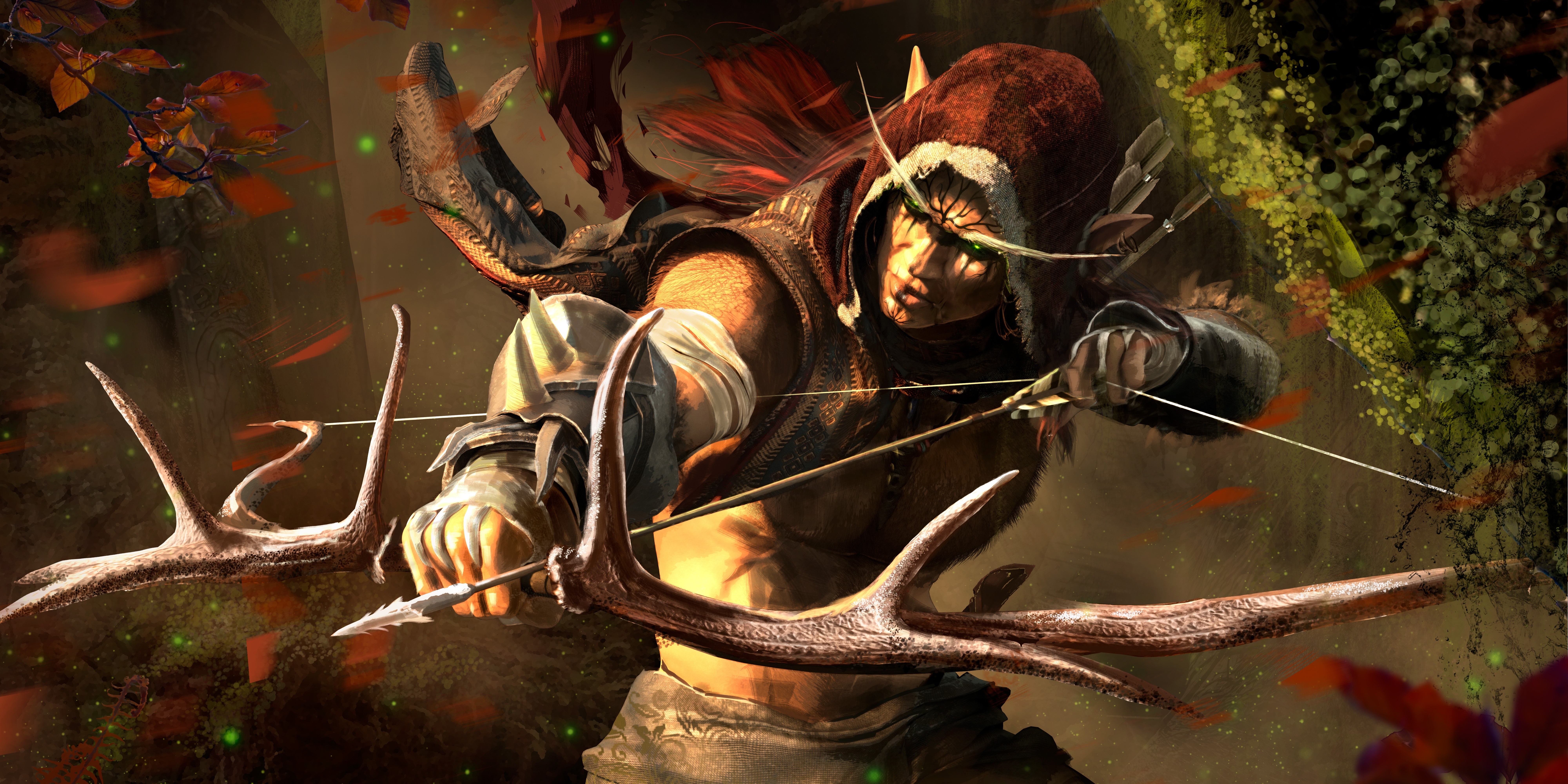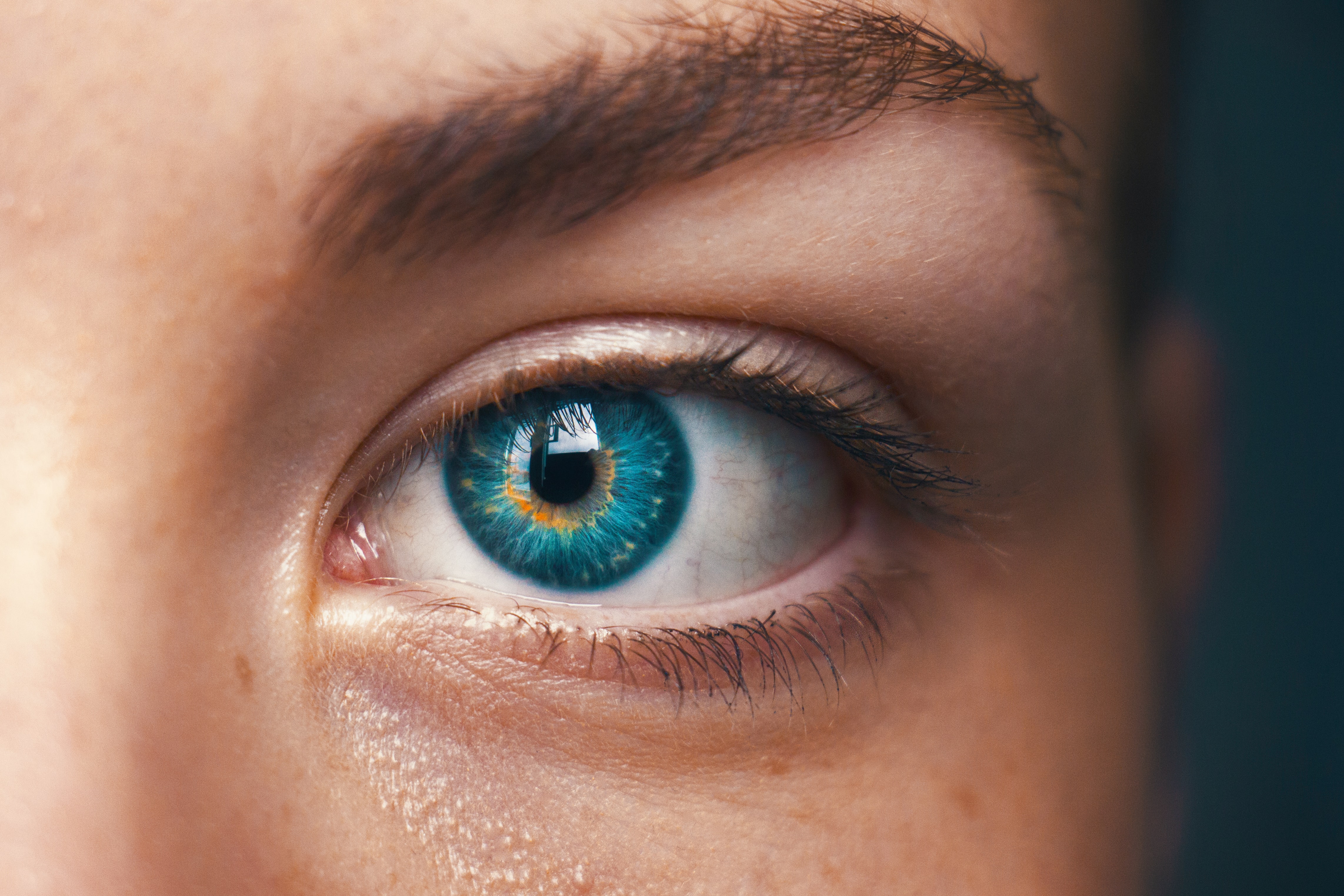Elves-Getting To The Point
Bardulf muttered under his breath, as he readjusted his glasses. He tried for what must have been the hundredth— no, millionth time to translate the ancient inscription carved into the stone slab. For someone who bragged about being able to see a target from two miles away, the elf had the eyes of a grandmother when reading anything up close.
He would have reminded her that he was still young, but to Ruby? He looked like a 40 year old, he sounded like a 40 year old, he was a 40 year old. She rolled her eyes. If she wanted an old man on this mission, she would have brought her own father. “Have you finished yet, Bardy?”
“Give me one second. The size of this inscription is so small. Maybe if I… Gah, blast it all!” Bardulf marched to the far end of the room and removed his glasses. His large eyes made him more like a tawny owl who had just heard a thunderclap; the glasses tended to soften the disproportionate sizing for Ruby. Bardulf straightened his back as he tensed his muscles, altering the shape of his eye ever so slightly to focus on the stone’s inscription.
She had seen him do it plenty of times, but even now the whole “eye bulging” trick unnerved Ruby.
“Ah! There we go!” Bardulf’s eyes finally started scanning the text. “I swear, every human culture has the smallest handwriting. I think it’s saying to press the blue one.’”
Ruby shrugged and pulled the sapphire blue switch on the wall. Instead of the exit opening, water began to fill the room. Ruby glared at Bardulf. The elf yelped as water filled his new boots and was rapidly approaching his knees. “No! It was yellow! Yellow and blue look similar in ancient Allurin! Try the yellow, quick!”
Ruby swore that if they got out of this alive, she was going to make sure Bardulf would never live past the young age of 40.
Elven Nature

Anytime someone says “elf”, you probably think of Tolkien elves, with unearthly beauty, leaf-like pointed ears, and eternal-ish life. They are still of the fae, make no mistake, but rather than being synonymous with “tricksters” and “imps,” they are humanoid beings with complex politics coupled with military tactics and a language system that would make you weep.
(Tolkien was a linguistics GOD, if you weren’t aware. He crafted ancient, working languages for his books, while I let Google Translate mince up words beyond recognition and then use French grammar to make a bizarre form of speech that may sound like the speaker is having a stroke)
Unlike the general trickster vibe from Scandinavian culture, Tolkien built his elves with grace and nobility. The modern-day audience is bound to see Tolkien inspired elves in fantasy books or television, western or eastern, and their popularity has grown exponentially with the rise of the popularity of Dungeons and Dragons.
And there’s no denying how fascinating elves are to our culture. In a sense, they are a strange dark mirror to humans (or specifically, western culture). What are the implications a culture where the civilians live for centuries or eternity? How do these impossibly beautiful fae-touched creatures interact with humans, and do they find humans lowly or odd? How human are they, and do they have souls?
For me, I’ve always been stuck on “why the pointy ears?”
No really, what is up with the pointy ears? Confession: I haven’t ever found most iterations of elves in media compelling. They are long lived humans with cool ears.
That is until I started doing these worldbuilding posts, and I realized how fun elves would be to figure out in a biological sense! Here, we’re going to focus on what makes an elf… well, elfy! Pointy ears, longevity, and of course, those striking elven eyes that apparently can double as binoculars.
Live Long and Prosper
What are elves known for?
If you said bow and arrows, you would be correct, but that has nothing to do with biology, and so the next best answer would be longevity! For Tolkein, they are immortal, but pop culture nowadays has elves as just a long lived species (give or take a few centuries). What animals can we examine for a biological explanation of longevity?
My first thought when drafting this post was, of course, turtles and crustaceans. However, elves are mammalian (or at least that’s what I’m led to believe from all of my readings and I have to reason to assume otherwise). Let’s dive into mammal longevity then!
A long-lived mammal would most certainly be the Bowhead whale, which has a predicted maximum lifespan of over 250 years and real life example of 211 years… except the paper in question only looks at something called CpG density and DNA methylation and how those correlate with. Long story short, increased CpG density (your DNA has Cytosine, C, and Guanosine, G, that can be linked together by a phosphate group) and DNA methylation seem to be correlated with longevity, as the CpG’s and DNA methylation may protect the DNA from mutation during long life. Problem is, this paper was hard for me to interpret.
It also doesn’t help that the bowhead whale is difficult to research in terms of lifespan. If only there was a land-locked mammal that we could study within our lifespan…
But there is! We can turn our attention to another long-lived animal: the naked mole rat. That’s right, folks. I am calling elves the primate equivalent of naked mole rats.

I know what I said. I regret nothing.
See, the average lifespan of a naked mole rat is 30 years. Now, that may seem unimpressive until you recall that the average lifespan for a rat is (quickly googles) 2 years. Naked mole rats have a lifespan ten times longer than an average mouse of the same size. That’s pretty comparable to the fantasy elven lifespan compared to a human’s! AND THEY ARE CANCER RESISTANT, meaning that despite living ridiculously long for a rodent, naked mole rats don’t tend to develop cancer (which we want for our long-lived elven species). The best part is, we can actually study the aging of a naked mole rat on a genetic level without waiting, like, 200 years!
And so now into the deep dive of our naked mole rat based elves (hereby known as NMRBE’s).
(Yes, I said it. And now you can never unsee it.)
For those who have taken a science class, you may be assuming that our NMRBE’s have super long telomeres; surely that must be the simple explanation for there long lives. See, whenever your cells multiply due to aging or repair, your DNA will shorten with each multiplication. Telomeres are the end lengths of DNA that are just there to protect your important DNA from not getting cut. We tend to think aging is where short telomeres shorten over time.
For our NMRBE’s, that’s not too far off. Studies have shown that telomere length is maintained in naked mole rats throughout the rodent’s lifespan. Naked mole rats also have a mutated region in the telomeres. that a protein called TRF1 can bind to really well compared to other rodents; this binding protects the telomeres. To put it simply, naked mole rats can maintain these telomeres throughout their lifetime. In fact, their cells are resilient to taking DNA damage in general. And so we unravel the secrets of possible biological longevity in our elves!
But wait, there’s more! Naked mole rats have also been shown to have altered metabolic pathways compared to other rodents! Remember, “metabolism” is how our bodies break down and build up proteins, carbohydrates, nucleic acids, and fats on a molecular level. What the researchers found was that naked mole rats have a strong antioxidant system protecting their cells from reactive oxygen species. Surprisingly, others have also noted the naked mole rat’s ability to protect against deteriorating reactive oxygen species. Upon examining what proteins are hanging out in the rodent, we see high abundance of nutrients that have been associated with increased lifespan in both humans in mice when given to these species.
What this means is that our elves are metabolically unique compared to humans. Whether that is due to genetics, diet, or even the makeup of their gut is still to be determined. But we’re not done with our NMRBE’s yet, my friends. Oh, no we are NOT! See, our elves, like the naked mole rat, will also need to have a low metabolic rate, low body temperature AND low cardiac output. Translation: when they’re just laying around, not running off and shooting at things, they are not burning a lot of calories and have a pretty low resting heart rate. The idea here is that this protects the animal’s organs from stress.
No Need For Sleep

“Elves not needing sleep” is not really a Tolkein invention. Legolas definitely sleeps in the Lord of the Rings trilogy. BUT, with the growing popularity of Dungeons and Dragons, 5th edition, this idea is definitely out there in popular culture.
So let’s do it. I like a challenge!
I’m going to go to the players handbook. This states that elves only need to go into a “trance-like sleep” for about 4 hours to gain the benefits of a full night’s rest (Fellow gamers, I’m paraphrasing here. The mechanics of a short vs long rest don’t really matter for the sake of this argument).
There was a genetic study done a few years ago using whole exome genome sequencing where they found a mutation in a gene called ADRB1 among folks who could get away with a short sleep cycle (<6 hours of sleep). The protein from this gene is a receptor in your cell walls. In mice containing this mutated ADRB1 gene, the neurons in their brain had altered activity, which corresponded with increased wakefulness of the mice.
While this mutation is rare in humans, occurring ~4/100,000 in a given population, we can probably say it’s common—no, universal—in elves. And that’s not the only mutation associated with short sleep: the same team in 2019 found a mutated gene NSPR1 for a neuropeptide (protein that interacts with neurons) that was also associated with shortened sleep cycles. A missense mutation in the DEC1 gene, which regulates circadian rhythm, has also been found in folks who require less sleep.
How does this translate to elven sleep? Good question. As simple as it would be for me to just say “hey, elves just need mutations in these genes,” the reality here is that scientists are currently trying to unravel the mysteries of sleep. The mutations discussed here are only the tip of the iceberg of what could contribute for short and sweet sleep, because scientists are still struggling to understand how sleep works under normal circumstances. Or, to put it another way, there are certainly more ways to shorten sleep beyond just these three genes.
But the important message here is that yes, short sleep cycles are entirely possible and inheritable! There are multiple genes that could be in all elves that would give them a shorter biological need for sleep.
What Do Your Elven Eyes See?

I run the risk of spoiling one of my other blog posts where I’ll go into detail of how fantasy Darkvision could work, but what the heck! It’ll be worth it!
How far could Legolas see? A quick google search tells me that his best lookout record was about 17 miles. What this tells us is that elves are 100% predators. I would find it hard to believe that they evolved to attack with a bow and arrow, but it certainly would be their weapon of choice in whatever the present day is in a fantasy story, followed by any other firearm if you want to move past medieval Europe.
So, to my utmost dismay and sadness… we cannot look at the naked mole rat for this one. They apparently have degenerated eye and optic nerve. In other words, they’re going to have trouble seeing the eye chart at the optometrists, let alone 17 miles.
In fact, we have to move away from mammals and examine the optics of an eagle…
Psych! While we can certainly use the classic eagle eye to build our scientifically accurate elf, we can stay within the confines of mammals! We can’t get 17 miles like Legolas, but we can get 5km, which is the distance for a cheetah’s vision (so, ~3.1 miles). (References = Quick Google search, because I can’t access the actual scientific papers on cheetahs for some reason. It’s insanely annoying).
Cheetahs have high density of cones in their retinas (the back of one’s eyeball that detects light), making their eyes more sensitive and able to distinguish color. However, their night vision is not nearly as acute as other felines, but that’s fine for daytime hunters.
However, I personally like the idea of having bird-of-prey vision for elves, mainly because they would require large, elongated eyes (more like “eye tubes” than “eyeballs”) like an owl. Or, they have the anatomy of eagle eyes, with corneas that can change shape. to focus on far away objects. Both require high concentration of cones and rods in their retina. I not only enjoy the visual of an elf with proportionally large eyes (giving them a more distinct look from humans), but if they have eye tubes like owls, they can’t move their eyes. They have to move their heads to focus on something, which I think would explain the “high and mighty” portrayal of elves. Rather than just adjusting their eyes, elves would turn their entire face towards you and may even need to walk back a ways if they are far sighted (like owls) to see who’s talking. This could easily be mistaken for “haughtiness” when they’re actually trying to see who the heck is talking.
(The exception to this would be elves biologically adapted to underground (for my D&D folks, the Drow), mainly because they would still have high concentration of photoreceptors and large eyes, they would lack the need to hunt with the use of far sight. Twisting, turning caverns make spotting prey from miles away quite difficult, and I think would shift the genetic population to favor near-sightedness. Just saying!)
But most importantly, this means that more advanced elven cultures would be heavily reliant on glasses and contacts to see things up close! As a person with glasses, that would be pretty cool :)
About Those Ears…
Ok, so I found one instance while scouring the internet where Tolkien apparently describes his elves with pointed ears, so they are definitely an elven trait.
I feel like what I have to say next is going to be underwhelming, but… here’s how I would make the ears work.
They are just a trait. Like human hair color, except every elf has pointed ears of varying sizes.
Look, I know we want me to really dive into the benefits of pointed ears, and how that would change the cochlear duct or their neuronal sensitivity but the reality is… pointed ears don’t really do anything. They’re just pointy.
Don’t get me wrong, they look cool! But the only time you see pointed ears in human is Williams syndrome, which effects more than just the face. We could go down the rabbit hole of describing how elves may have some genetic similarities to what we see in Williams Syndrome (WS), but as I was reading through some articles on WS, most of what is described didn’t seem very “tolkein-elvish” to me aside from the pointed ears.
Some real folks do have Stahl’s ear, where there is deformity in the cartilage in the ear. This extra bit of cartilage can give the ear a pointed look.
And that’s when I realized the problem: pointed ears are just about cartilage. No increased ear sensitivity. No alteration in biological metabolism. It’s just some deformed cartilage at the tip of the ear.
But… yeah, sometimes a trait isn’t biologically beneficial. Sometimes it’s just there after centuries of genetic drift. Or it was a mutation that elves took to be more attractive and became the dominant trait after centuries of elves picking the folks with the pointiest ears to mate with. Probably came about for sexual selection rather than natural selection.
But hey! I finally answered “why the pointy ears,” so points for us!
Takeaways?
I have to say, figuring out that elves are the naked mole rats of fantasy species was pretty hilarious to me. I mean, could you imagine elves with other aspects from the rodents, like huge front teeth? Comedy. Gold.
I also had to reign myself in at points, as this post is a broad stroke in “sciencifying” elves. I do want to explore Dungeons and Dragon’s various versions of elves, especially Drow. I’m not down with the whole “all Drow are evil” part of D&D, but I am fascinated by the evolutionary implications of having a subspecies that evolved to live in a subterranean envorinment.
Also, I’m biased as my favorite D&D character is a Drow Cleric, but this is starting to dip dangeorusly into just a D&D post, and not a fantasy/scifi worldbuilding post!
Are there biological aspects of elves that I didn’t touch on that need to be explored? Are you excited or disapointed that we managed to mesh cheetahs and eagles with naked mole rats? (I know my answer!)
Let me know in the comments!
